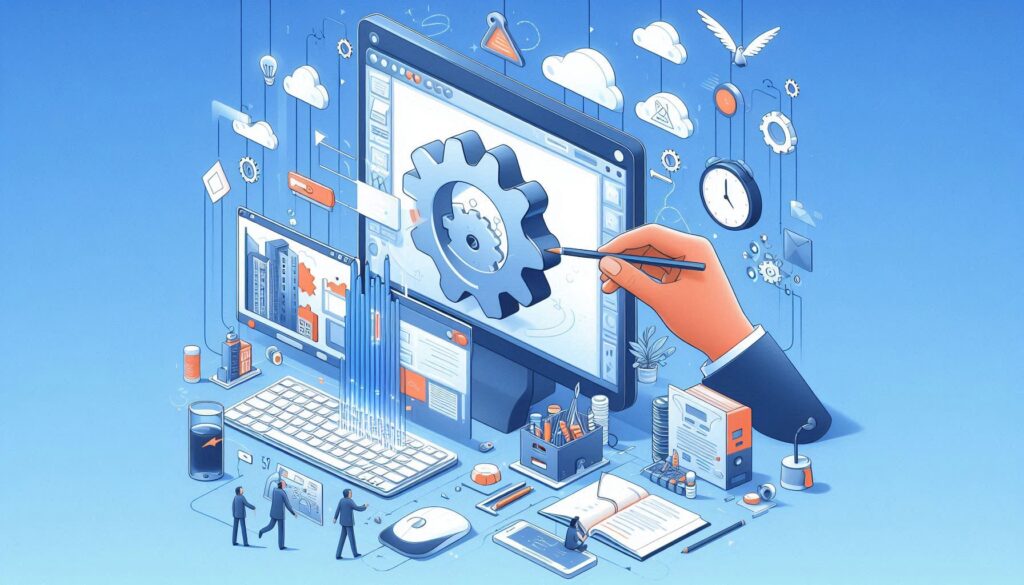Table of contents:
Businesses and individual bodies are now prioritizing the creation of high-quality software for efficient operation. The structured approach that brings this system to life is what is known as the software development life cycle (SDLC).
This methodology defines the step-by-step procedures for delivering robust, secure, and maintainable software. But what exactly is SDLC, and why is it so important? Let’s delve into this guide to find out and also learn about the SDLC models
What is the Software Development Life Cycle
The software development lifecycle (SDLC) is a structured, cost-effective process followed by a software development organization to ensure the production of high-quality software. This precise plan describes how to develop, maintain, and enhance software products.
The detailed plans encompass activities and deliverables enabling software to meet customer expectations during and beyond production. These stages minimize project risks, speed up development, and reduce alternative costs. SDLC aims at building superior software tailored to meet users’ requirements in the shortest possible time and within cost estimates.
How Does the SDLC Work
The SDLC breaks down several tasks involved in developing a software application. The development process involves stages of activity that contribute to the final product.
A well-structured SDLC ensures teams can thoroughly cover every aspect of the development process. Details of the software development lifecycle phases vary for different teams, but we have outlined some basic stages below.
#1 Planning
Initially, you define the project goals, scope, requirements, and cost benefits. Here, you plan the resources and timeline of production. This involves scheduling, feasibility studies, resource estimation, and allocation.
Gathering these requirements forms the building blocks of the software project. A detailed plan leads to the actualization of quality software projects.
#2 Design
The design phase is like a blueprint for the next phase. Software designers analyze requirements and create the best architecture for the software. This software development lifecycle phase includes system, interface, and data design.
#3 Implementation (or Coding)
During the implementation phase, the development team writes the actual source code based on the software’s previously defined design. The codes are analyzed and reviewed for use on multiple devices.
#4 Testing
Here, you evaluate the software to ensure its smooth function execution. It undergoes rigorous quality analysis procedures to ensure it meets users’ requirements. Testing software enables developers to identify defects or bugs and provide immediate improvements.
#5 Deployment
The tested product is then released to end users in different production environments. This phase also includes user training and documentation.
#6 Maintenance
In the final phase, various software elements are monitored to provide ongoing support and maintenance. This enables developers to implement necessary updates or enhancements, ensuring optimal system performance and security.
Software Development Lifecycle Models
Several models exist within the software development lifecycle process, each offering unique approaches to managing the development phases. Let’s look at some commonly used SDLC models:
#1 Spiral Model
The spiral model provides unique risk-handling support. It combines iterative development with the linear, sequential flow of the waterfall model to identify risk patterns. Using this model, you can build prototypes to evaluate and implement refinement at each phase.
#2 Waterfall Model
The waterfall model represents the most structured yet simplest and oldest software development lifecycle methodology. It is a linear and sequential approach in which all phases run sequentially—each phase must be completed before the next one begins.
This model is simple to understand and provides a solid output at the end of each stage. However, it lacks flexibility since it is difficult to return to a previous phase when completed. Contrary to this, a change can affect the software’s quality, costs, and delivery time.
#3 Agile Model
The agile software development lifecycle methodology uses an incremental and iterative approach. It arranges the SDLC phases into development cycles to adapt quickly to changing requirements. This model enables flexibility in development, facilitating quick project completion.
#4 V-Model
The 4 V-Model is also known as the verification and validation model. The V-shape model is like an extension of the waterfall model. At each stage of the development lifecycle, a testing phase is associated, and the next phase starts when the previous phase’s testing is completed. This ensures that each phase is well-verified and validated.
Importance of the Software Development Lifecycle
Due to changing requirements, understanding and implementing effective software development lifecycle management can be challenging. However, the SDLC provides a systematic management framework essential for any organization looking to produce high-quality software.
Whether through traditional models like Waterfall or more flexible approaches like Agile, the SDLC provides a roadmap for successful software development. Here are some advantages of SDLC:
- A well-structured SDLC process leads to efficient planning, estimation, and operations.
- SDLC processes ensure that only superior-high-quality systems are developed by performing thorough tests and reviews on every aspect of the software.
- By improving cost estimation, the SDLC helps manage project budgets more effectively.
- A secure software development lifecycle improves risk management.
- The SDLC ensures that the final product meets their needs and expectations.
How North South Tech Can Help
Need a software solution? North South Tech can build it. We don’t just develop software; we craft digital products that solve problems and drive results.
Forget the jargon. We understand that software is a tool, not a magic wand. Our approach is straightforward: we listen to your needs, design a solution, and deliver a product that works.
From the initial spark of an idea to the final polished product, we’re with you every step of the way. Our process is transparent, our communication open, and our commitment unwavering.
Ready to see what we can do? Let’s talk.




